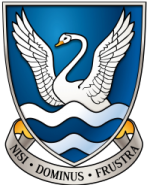Work Experience Report
During the work experience week I had the amazing opportunity to work in the laboratories 10 metres under the buildings of the Princeton Plasma Physics Laboratory (PPPL) in America. Princeton is well known in the Physics community, as the place in America that Einstein taught lectures and where he carried out his later research. So with Professor Charles Gentile of Princeton as my mentor, I was guided through the different wonders of physics from “Putting a Star in a Jar” with the nuclear fusion reactor (NSTX) to plasma powered spacecraft (HTX) … there was no end to the future possibilities that these technologies could behold.
On arrival I was given a tour of the facilities which were absolutely vast. Long underground tunnels guided us to experiments such as the Paul Trap Simulator which can simulate different magnetic configurations by varying the oscillating fields and can be used to help predict the effect magnetic fields will have on particle accelerators such as the one in CERN and lasers designed to cut through metals and other materials, made dangerous by the fact that they are completely invisible beams.
The experiment I was most heavily involved in, however, was the PTOLEMY experiment, as seen in the picture.
This experiment involves extremely strong magnets which are 6000 times stronger than the earth’s magnetic field and are powered by high temperature superconductors which are cooled using a mixture of liquid nitrogen and liquid helium. I only started learning about superconductors in my AS Physics this year, and it was really useful to see them operating in a practical environment.
While I was there preparations for the experiment were being made. The arrival of the vacuum which would be used was vital and there was great excitement when it arrived on site. When turned on it will create a vacuum with a pressure of 10-6 tor. The beta decay from the tritium will then produce neutrinos from which data will be collected and this will hopefully produce information that will help explain why the universe appears to not only be growing but accelerating. I was the photographer of the progress of the project while I was there and was also taught how to map the fields that the magnets where producing. This was really interesting as we were able to predict the results and then confirm these predictions by carrying out the tests. This was really fascinating as it gave a really good flavour of what science is like in action, and the excitement of having the first glimpses of projects that could change our way of thinking.
It wasn’t all just experiments though. There were plenty of meetings about health and safety, funding and co-ordination of the various projects. Although these weren’t just as exciting, they are a vital part of working in a research facility to help ensure everyone’s safety and the smooth running of all the many experiments going on. Most interesting of these meetings was the brainstorming of the Stationary Flowing Liquid Lithium System (FLiLi). It gave a really excellent insight into the problem solving and imaginative ideas for improvements. It was great seeing the teamwork of all the colleagues combining all their knowledge of their different areas of expertise to come up with the best solutions to the many challenges faced.
It was an absolutely amazing experience and I learnt so much over the week that I was there. The team were all extremely friendly and I was received with great enthusiasm that has really inspired me to continue on the path to Physics at university.
Gina Black, 13A





